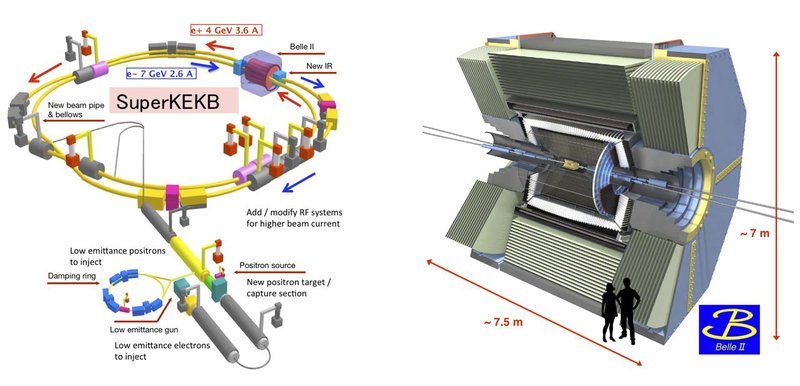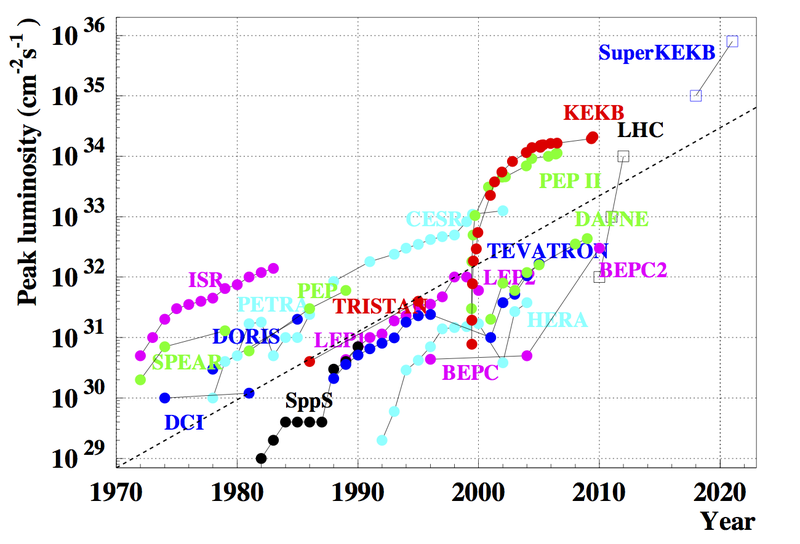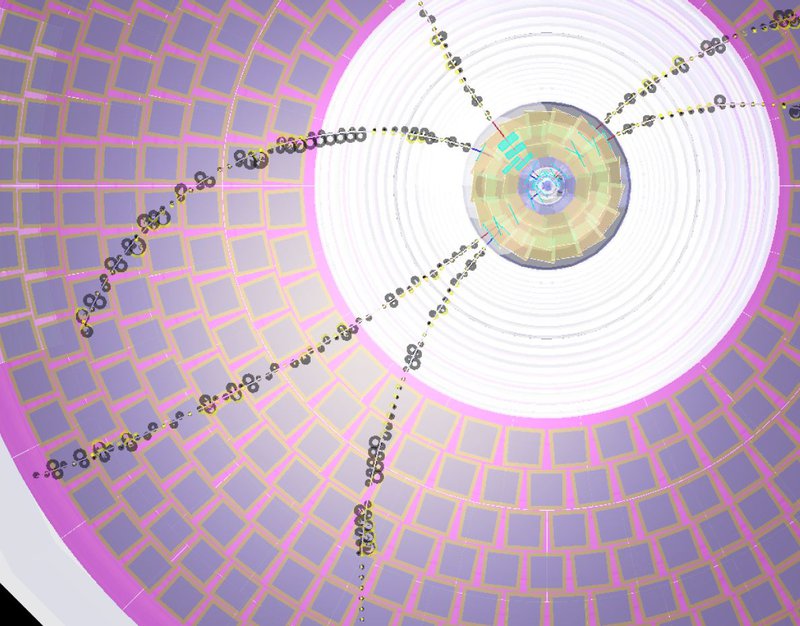Belle2 Collaboration
From 1998 to 2010 the Japanese High-Energy Accelerator Research Organisation (KEK) operated KEKB, a 3 km circumference asymmetric electron–positron collider thereby reaching the world record in instantaneous luminosity of 2.11×1034 cm–2 s–1. The chosen beam energies resulted in the predominant B-meson production in the collisions. The Belle experiment precisely analyzed the characteristics of pairs of B- and anti-B-mesons and confirmed the effect of CP-violation as described by the theory of M. Kobayashi and T. Maskawa, for which they were awarded the Nobel prize in physics in 2008. CP-violation is believed to be one of the origins for the observed dominance of matter over anti-mater in our present universe, but the measured level of CP-violation is by far not sufficient to quantitatively explain the actual asymmetry and a deeper understanding of the related phenomena is required.

SuperKEKB is an upgrade project at KEK to increase the instantaneous luminosity by about a factor of 40 to 8×1035 cm–2 s–1. The next-generation B-factory will complement the exploration of New Physics beyond the Standard Model currently being carried out at the energy frontier by the experiments at the Large Hadron Collider (LHC). While the LHC experiments provide a direct probe of the TeV mass scale, high-precision measurements of rare decays and CP-violation in heavy quarks and leptons provide a unique probe of New Physics at these and even higher mass scales through the effects of new particles in higher order processes.

In the past, measurements of processes involving internal loops have given access to high mass scales before accelerators were available to directly probe these scales. Reaching higher luminosity in a collider usually involves both increasing the beam current and reducing the beam size at the interaction point. While the original approach for the upgrade focused on an increase of the beam currents and the beam-beam parameter, based on the ideas of P. Raimondi the design changed in March 2009 by using a large crossing-angle at the interaction point and squeezing the beams to nanometre-scale to increase luminosity. The ambitious goal is to deliver an integrated luminosity of 50 ab–1 to the new Belle2 spectrometer by the mid of next decade, which is 50 times more data than the original Belle detector acquired.

The UNG member at Belle and Belle2 experiments is S. Stanič.
